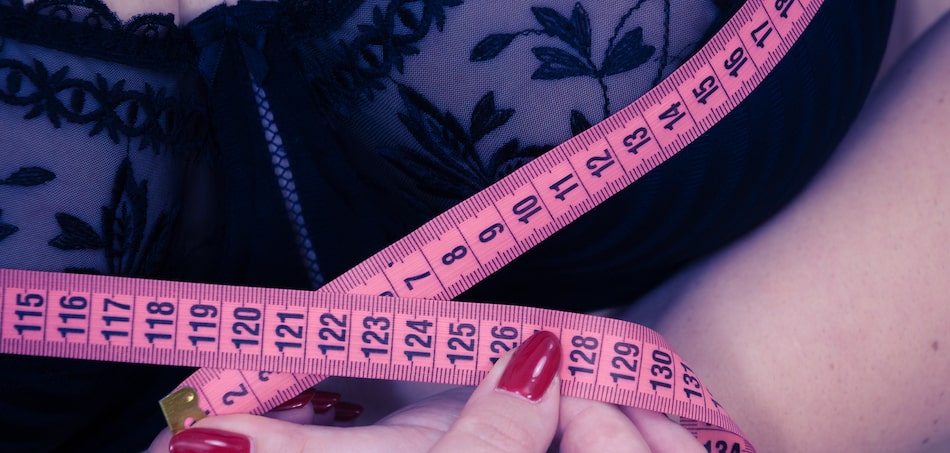
If you have breasts that are large in size and also cause you to experience pain in the neck and back due to their size and weight, breast reduction surgery might be an ideal option for you. Breast reduction is when a surgeon removes fat, skin, and breast tissue in order to give the breasts an appearance that is smaller in size and to relieve any discomfort resulting from the size of the breasts. While you might like the idea of smaller breasts, you could also be concerned about the possibility of scarring after the procedure. Let’s take a look at scarring after breast reduction surgery and see if they can be avoided. Our spotlight on breast reduction scarring begins with an in-depth look from Cosmetic Town TV:
One of the first things to remember is that scars are inevitable with almost any invasive surgical procedure but that does not mean a patient has to expect the scars to be significant in nature. There are ways to lessen the appearance of scars during the surgical procedure as well as during the recovery period. Ask your doctor of choice about their experience with minimizing scarring from breast reduction surgery.
One of the main factors in the amount of scarring that occurs is the type of breast reduction technique performed by the surgeon. In general, there are shorter-scar and longer-scar techniques that are available to patients.
During a shorter-scar technique, the surgeon will make smaller incisions in the targeted area on the body. This breast reduction method is often performed on patients who have breasts that are sagging, and they desire a reduction in breast size that ranges from minimal to moderate. A shorter-scar technique is also known as vertical breast reduction or “lollipop” breast reduction and the procedure involves the creation of two incisions (one around the areola and the other one running from the bottom of the areola downwards towards the underlying breast crease). Once the incisions are made, the surgeon will remove the desired amount of fat, tissue, and skin in order to reshape the breasts to a smaller size. Since the incisions are smaller, any scarring is contained in small areas such as the lower half of the breast that is below the nipple.
During a larger-scar breast reduction technique, the surgeon performs more incisions so there are also larger areas of scarring on the body. This technique normally requires three incisions (one around the areola, one between the crease under the breast and the areola, and an incision that runs horizontally under the breast in the area along the crease). The larger-scar technique is used by a surgeon performing an “anchor” breast reduction AKA an inverted-T technique. It is an ideal procedure if you have breasts that are very asymmetrical or have a good deal of sagging. In addition, it is a good option for someone who wants to reduce the size of the breasts by a few cup sizes.
The scars from the procedure will likely have a look that is raised and thin on the top of the skin. The impacted area of the body will appear to be pink or red at first and then the color will become darker as the scars heal and flatten. It might take up to a year for the scars to fade.
The appearance and amount of scars will vary between the two techniques. In addition, incisions that are created along the crease of the breast will not be as noticeable since they are hidden in the breast crease.
The surgeon will give you post-op advice and instructions on how to care for the breasts after surgery. Make sure you wear the provided chest bandages and surgical bra for the amount of time recommended by the surgeon after the procedure. Once the incisions are closed, there are some steps you can perform to minimize the size and look of the scars.
A scar massage involves making gentle movements in the treated area with the fingertips. You will need to gently massage the scar in a vertical direction and then in a horizontal direction. In addition, you should massage the scars by moving your fingertips in circles. The scar massage is believed to increase the amount of collagen and flexibility while also decreasing any discomfort in the treated area.
Scar gels and silicone sheets can be purchased over the counter to help minimize scarring. Silicone sheets are bandages that hydrate the area containing scars, so the surrounding skin is more flexible. Scar gels can be used on new scars to reduce their appearance, shrink them in size, and even fade their color on the body.
You can also wear sunscreen as UV rays can darken new scar tissue after surgery to the point that the scars are darker than the other areas of skin (which will make them more noticeable). Sunscreen with a SPF of 30 (or higher) is recommended by the American Academy of Dermatology to help protect the skin during the healing process.

If you are concerned about potential scarring after your breast reduction surgery, talk to the surgeon who performed the procedure. There are surgical options to remove scars, but they often leave a new scar where the old scar was located. Other options to remove scars include laser treatment, chemical peels, and topical bleaching medications. Ask to see “before and after” photos of actual patients treated by the surgeon to get a better idea about the type of results you can expect after the surgeon addresses the issue of breast reduction scarring on your body.
- MA